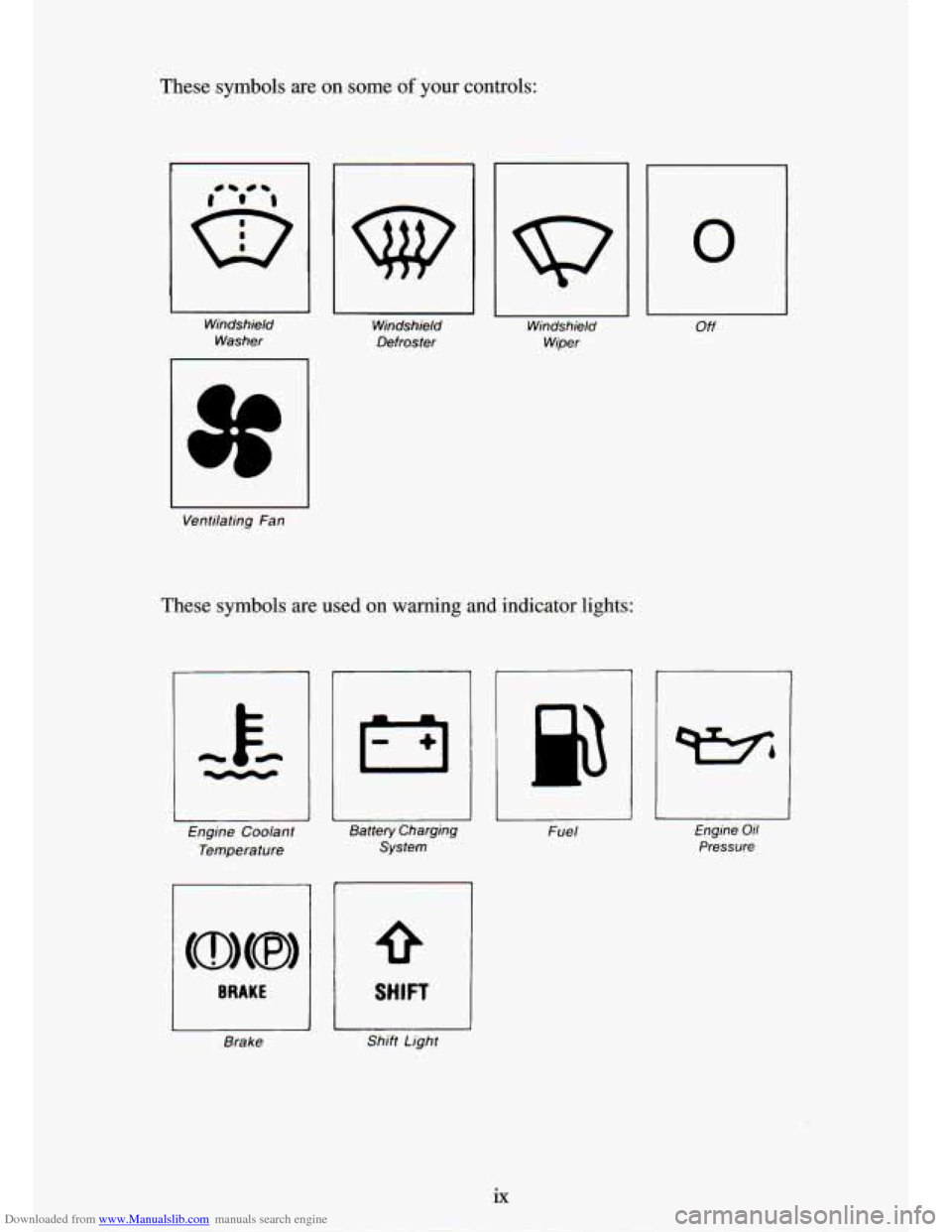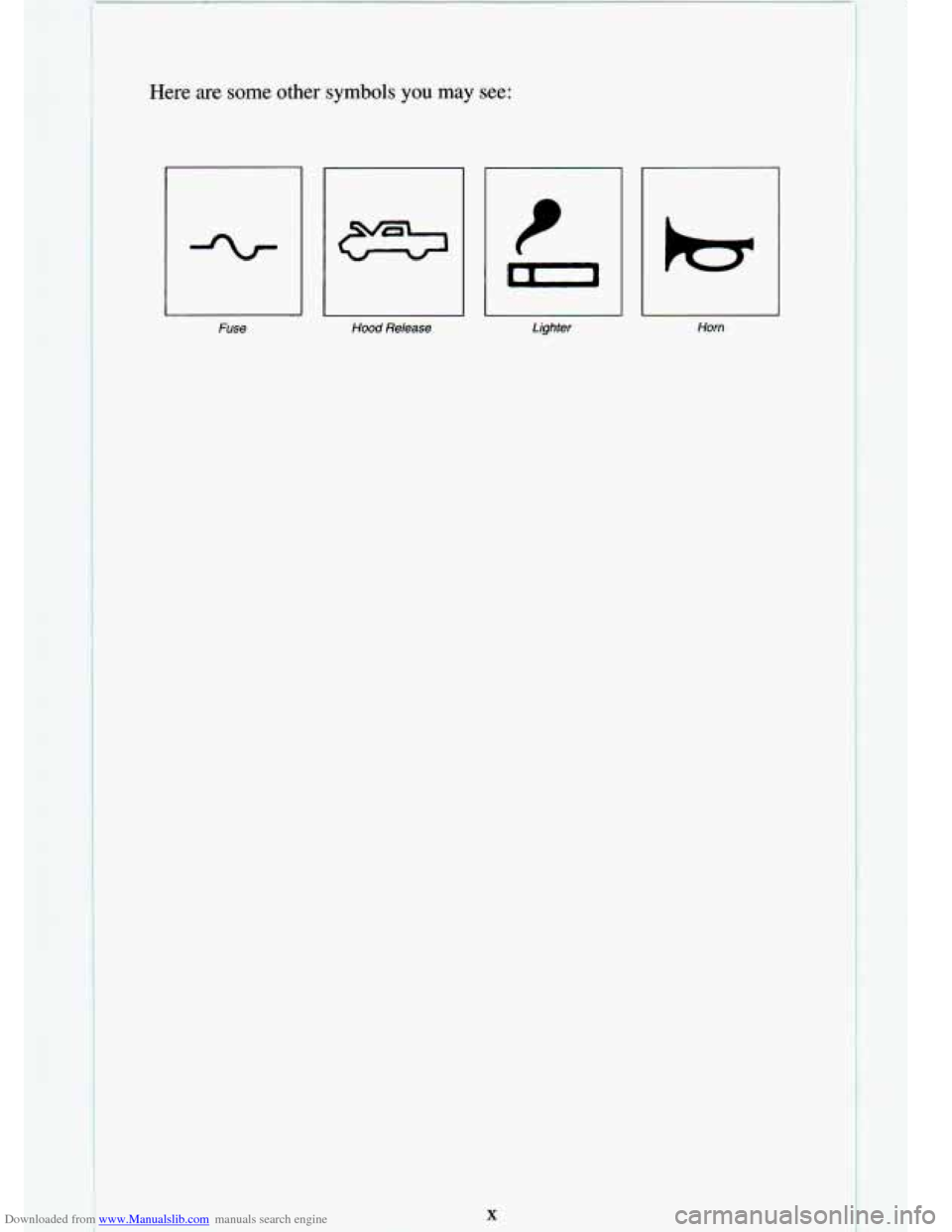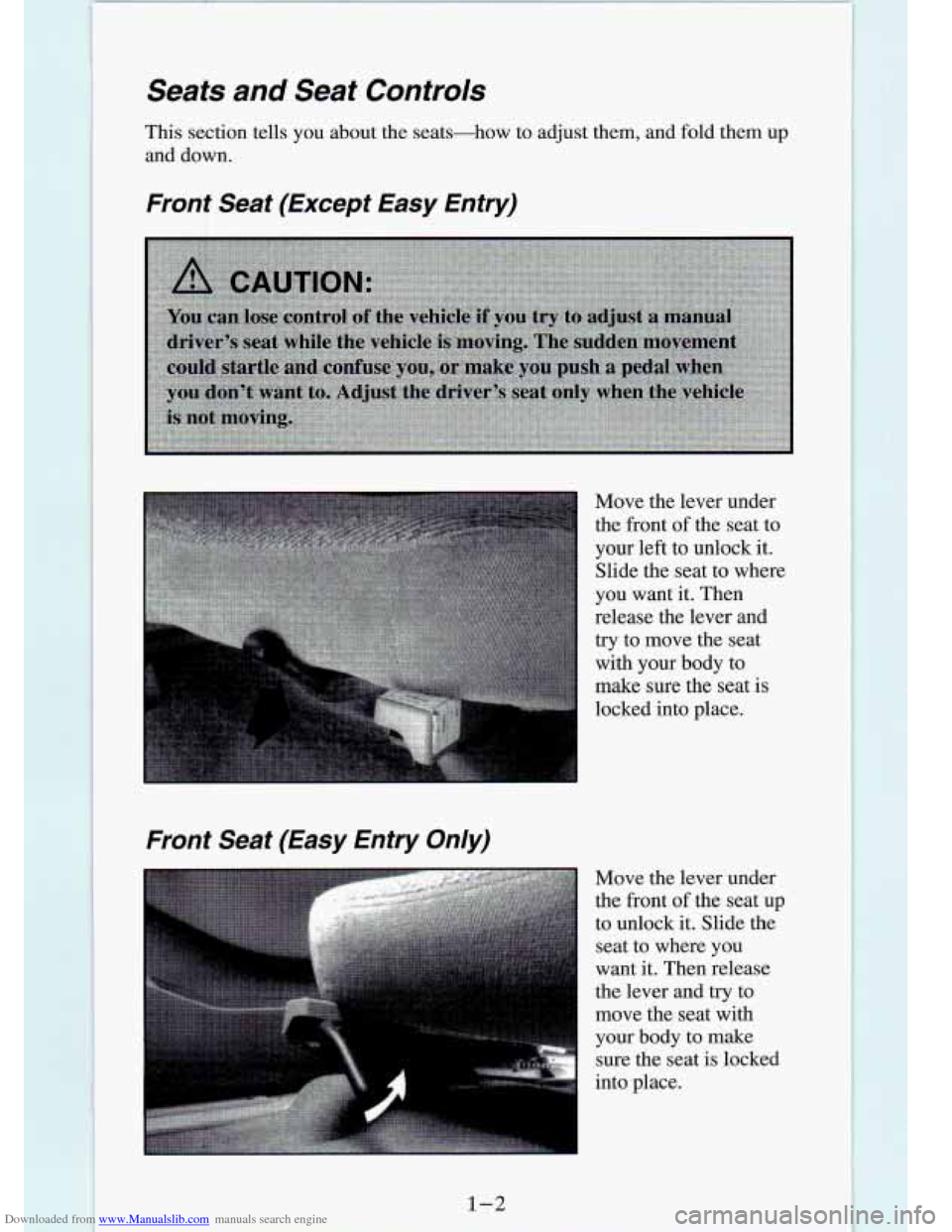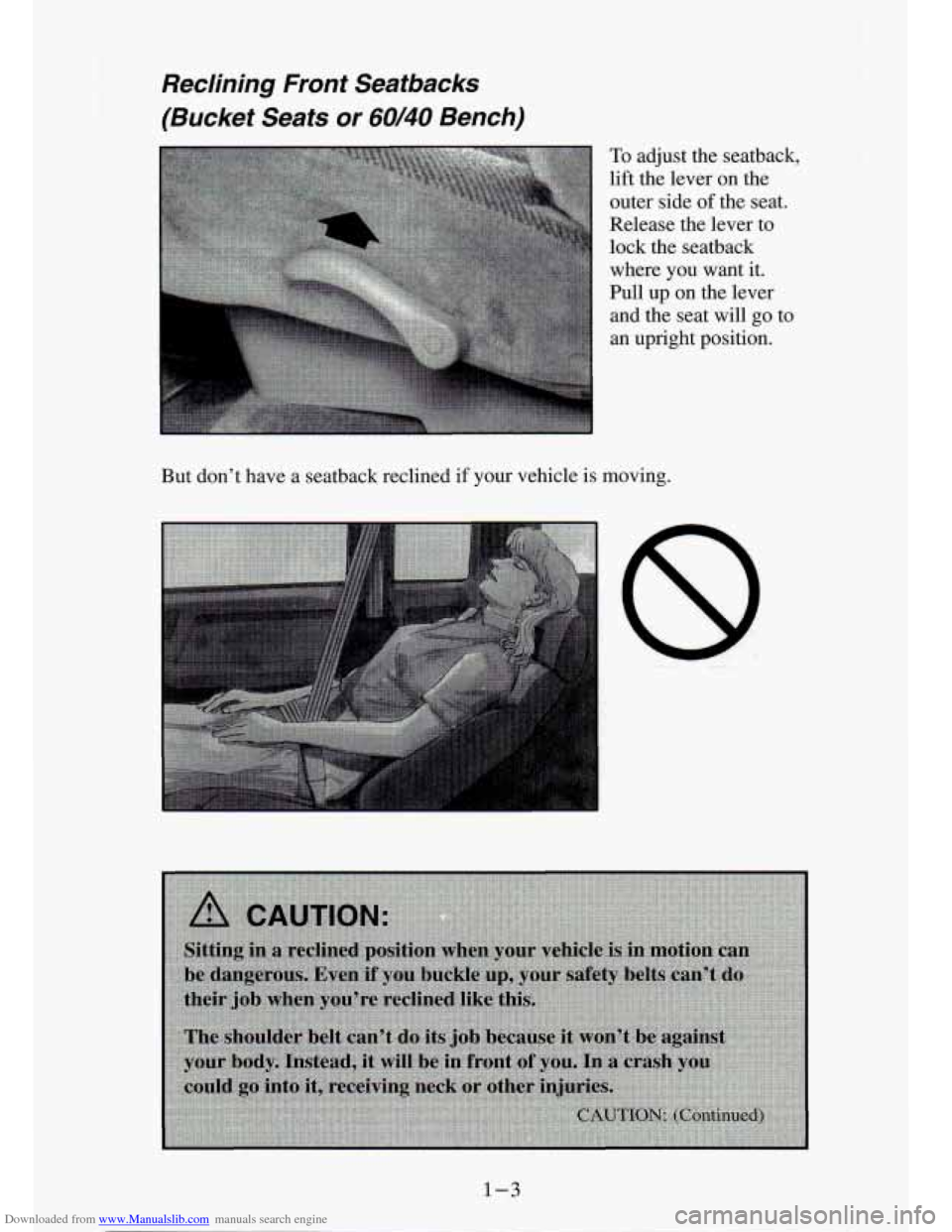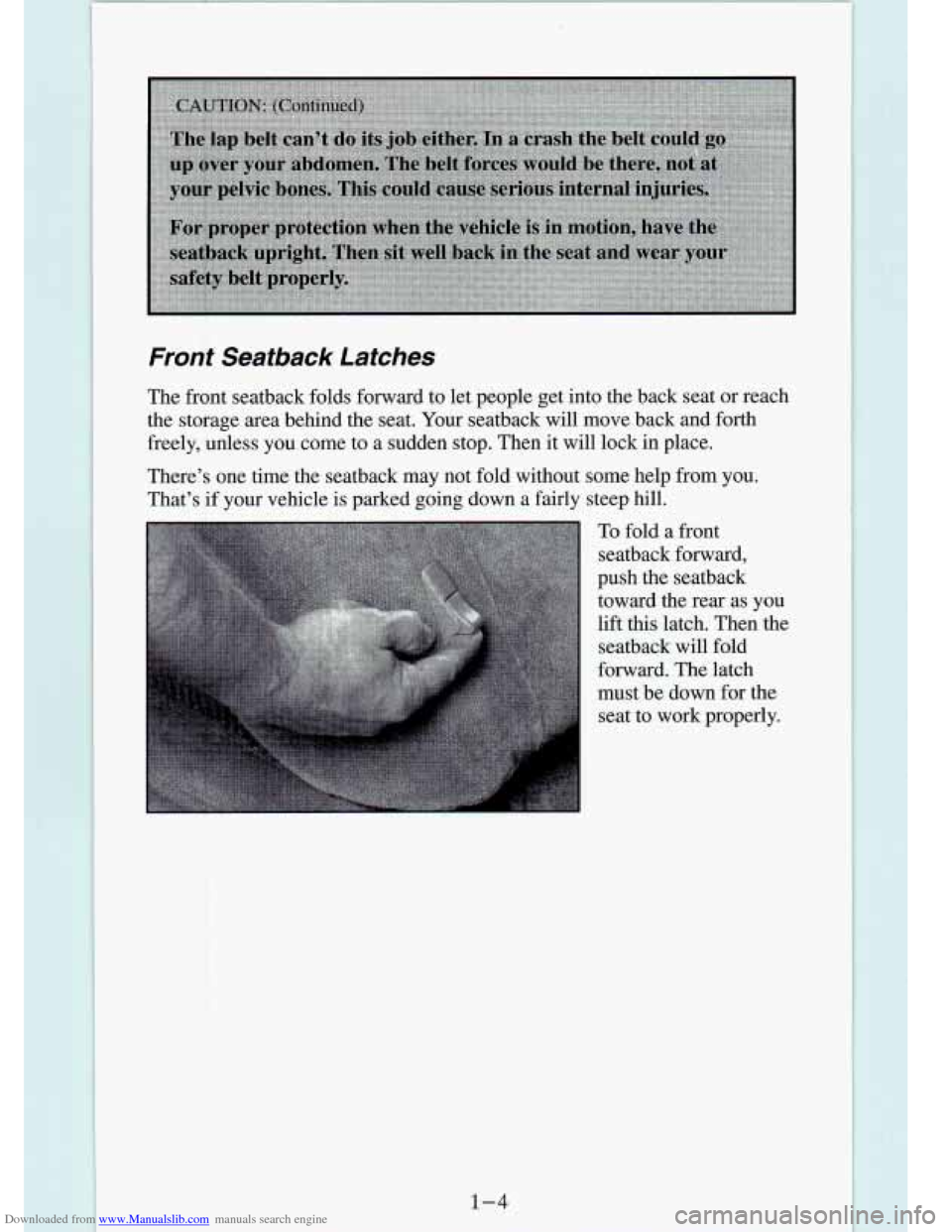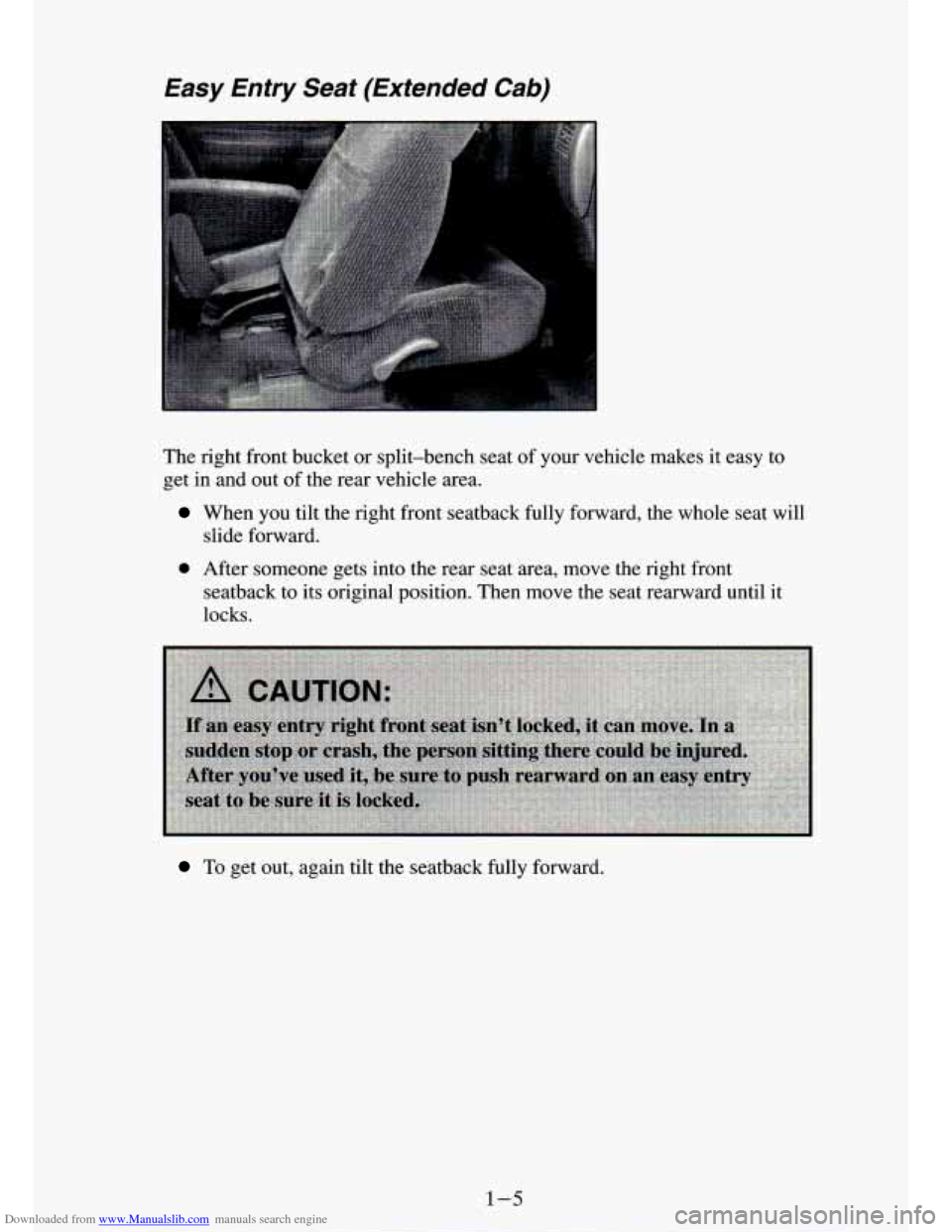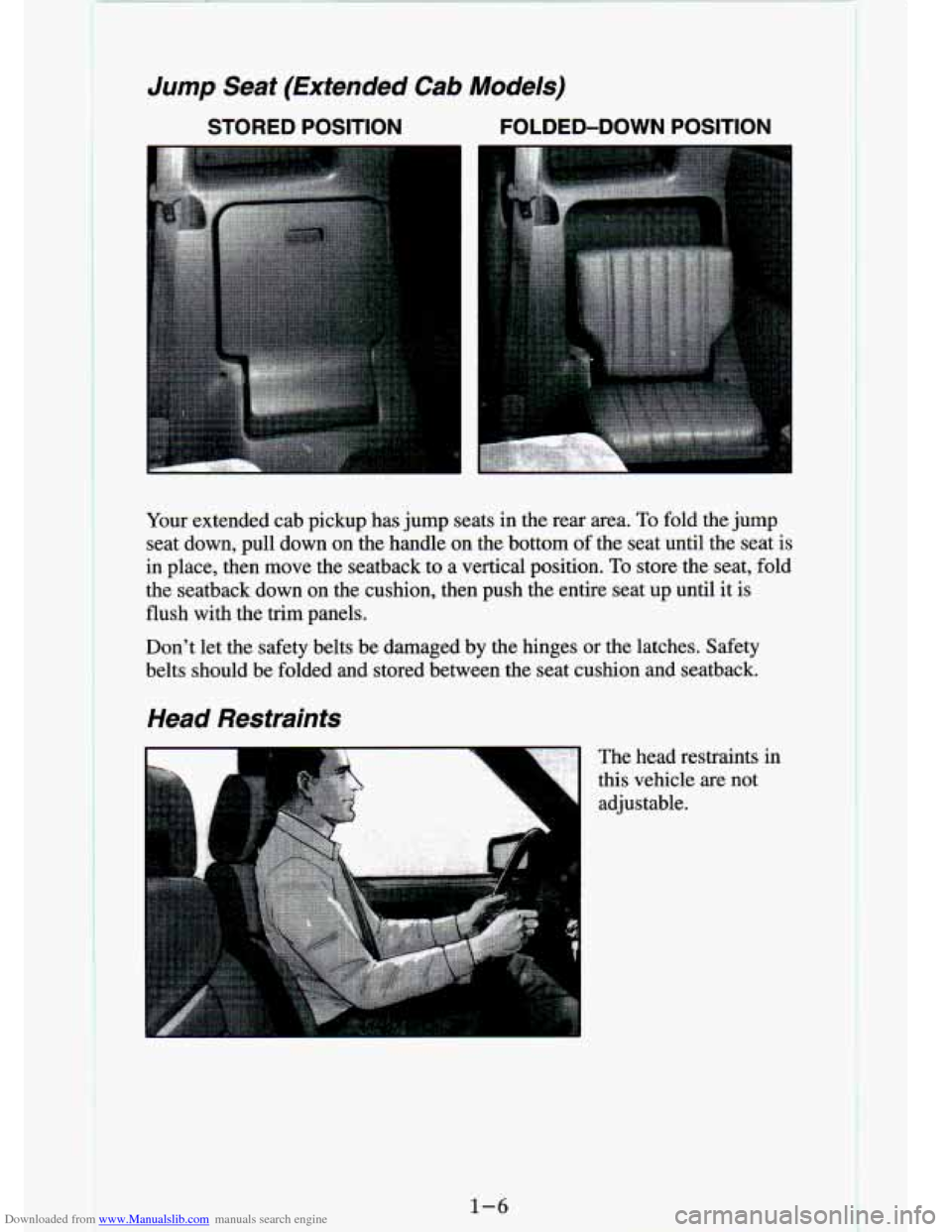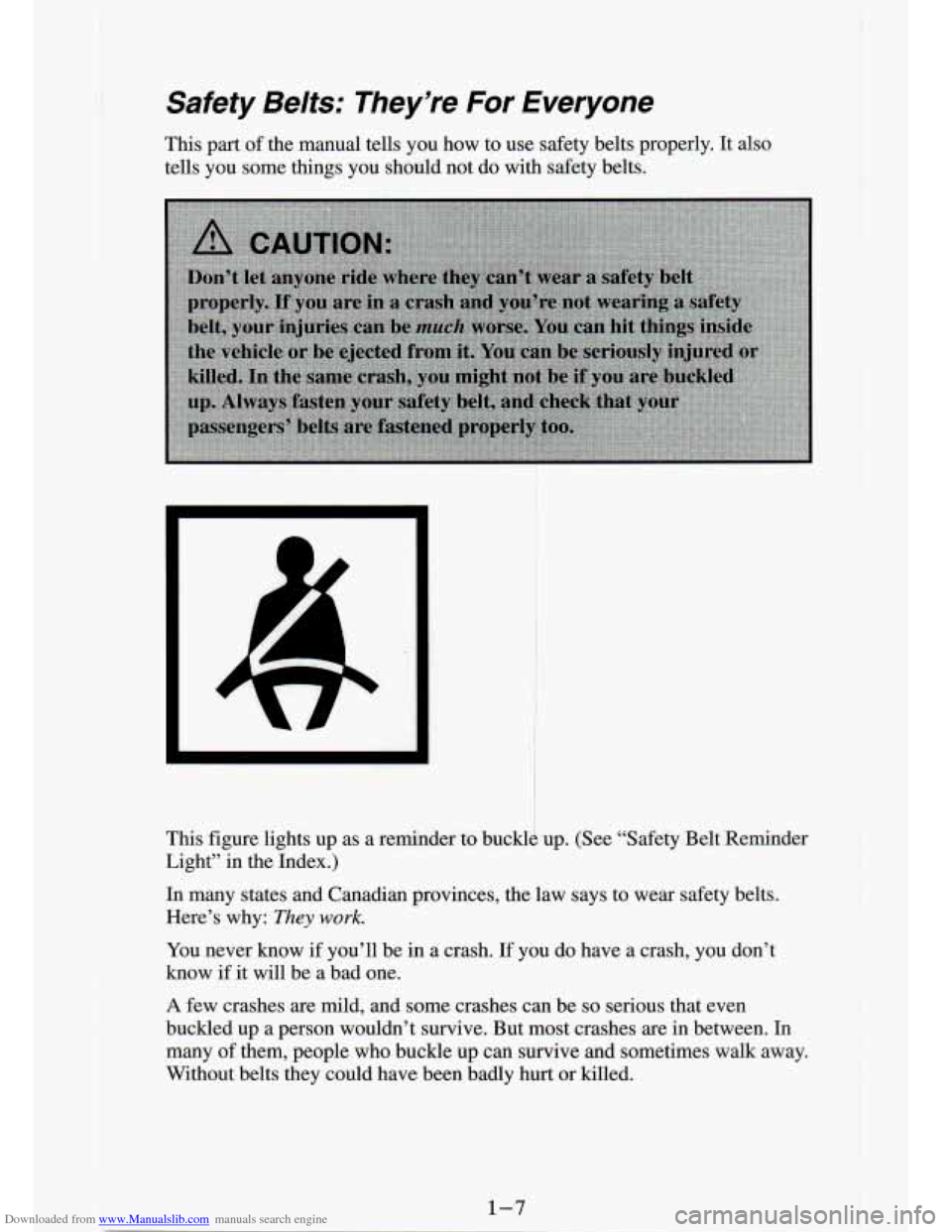CHEVROLET S10 1994 2.G User Guide
S10 1994 2.G
CHEVROLET
CHEVROLET
https://www.carmanualsonline.info/img/24/8266/w960_8266-0.png
CHEVROLET S10 1994 2.G User Guide
Trending: wheel bolts, diagram, ignition, child restraint, Replacement parts, fuel cap release, key battery
Page 11 of 340
Downloaded from www.Manualslib.com manuals search engine These symbols are on some of your controls:
Windshield Washer Windshield
Defroster Windshield
Wiper
I
Ventilating Fan
These symbols are used on warning and indicator lights:
Engine Coolant
Temperature
BRAKE
Brake Battery Charging
System
I SHIFT
I
Shift Light Fuel
0
Off
Engine Oil
Pressure
Page 12 of 340
Downloaded from www.Manualslib.com manuals search engine n ;are s ler symbols you may see:
t
m
Fuse Hood Release Lighter Horn
Page 13 of 340

Downloaded from www.Manualslib.com manuals search engine Seats & Restraint Systems
Section
Here you'll find information about the seats in your vehicle and how to use
your safety belts properly
. You can also learn about some things you should
not do with safety belts .
Seats and Seat Controls ...................................... 1-2
Head Restraints
.......................................... 1-6
Safety Belts: They're for Everyone
............................. 1-7
Why Safety Belts Work ................................... 1-8
Questions Many People Ask About Safety Belts
............... 1-11
How to Wear Safety Belts Properly
............................ 1-12
Adults
................................................... 1-12
Driver Position
......................................... 1-13
Lap-Shoulder Belt
.................................... 1-13
Safety Belt
Use During Pregnancy .......................... 1-19
Right Front Passenger Position
............................. 1-19
Center Passenger Position
................................. 1-20
LapBelt
............................................ 1-20
Rear Seat Passenger Positions
............................. 1-21
Children ................................................. 1-23
Smaller Children and Babies
.............................. 1-23
Child Restraints ........................................ 1-25
LargerChildren
......................................... 1-30
Safety Belt Extender ....................................... 1-33
Checking
Your Restraint Systems ............................. 1-33
Replacing Safety Belts After a Crash
.......................... 1-33
1-1
Page 14 of 340
Downloaded from www.Manualslib.com manuals search engine Seats and Seat Controls
This section tells you about the seats-how to adjust them, and fold them up
and down.
Front Seat (Except Easy Entry)
Move the lever under
the front of the seat to
your left to unlock it.
Slide the seat to where
you want it. Then
release the lever and
try to move the seat
with your body
to
make sure the seat is
locked into place.
Front Seat (Easy Entry Only)
Move the lever under the front of the seat up
to unlock it. Slide the
seat to where you
want it. Then release
the lever and try to
move the seat with your body to make sure the seat is locked
into place.
1-2
Page 15 of 340
Downloaded from www.Manualslib.com manuals search engine I Reclining Front Seatbacks
(Bucket Seats or
60/40 Bench)
To adjust the seatback,
lift the lever on the
outer side
of the seat.
Release the lever to
lock the seatback
where
you want it.
Pull up on the lever
and the seat will go to
an upright position.
But don't have a seatback reclined
if your vehicle is moving.
1-3
Page 16 of 340
Downloaded from www.Manualslib.com manuals search engine Front Seatback Latches
The front seatback folds forward to let people get into the b\
ack seat or reach
the storage area behind the seat. Your seatback will move back and forth
freely, unless you come to
a sudden stop. Then it will lock in place.
There’s one time the seatback may not fold without some hel\
p from you.
That’s if your vehicle is parked going down a fairly steep \
hill. To fold a front
seatback forward,
push the seatback toward the rear as you
lift this latch. Then the
seatback will
fold
forward. The latch
must be down for the
seat to work properly.
1-4
Page 17 of 340
Downloaded from www.Manualslib.com manuals search engine Easy Entry Seat (Extended Cab)
The right front bucket or split-bench seat of your vehicle makes it easy to
get in and out of the rear vehicle area.
When you tilt the right front seatback fully forward, the whole seat will
slide forward.
0 After someone gets into the rear seat area, move the right front
seatback to its original position. Then move the seat rearward \
until it
locks.
To get out, again tilt the seatback fully forward.
1-5
Page 18 of 340
Downloaded from www.Manualslib.com manuals search engine Jump Seat (Extended Cab Models)
STORED POSITION FOLDED-DOWN POSITION
Your extended cab pickup has jump seats in the rear area. To fold the jump
seat down, pull down on the handle on the bottom of the seat until the seat is
in place, then move the seatback to a vertical position. To store the seat, fold
the seatback down on the cushion, then push the entire seat up until it is
flush with the trim panels.
Don’t let the safety belts be damaged by the hinges or the latches. Safety
belts should be folded and stored between the seat cushion and seatb\
ack.
Head Restraints
The head restraints in
this vehicle are not adjustable.
1-6
Page 19 of 340
Downloaded from www.Manualslib.com manuals search engine Safety Belts: They’re For Everyone
This part of the manual tells you how to use safety belts properly. It also
tells you some things you should not do with safety belts.
I,
This figure lights up as a reminder to bucklk up. (See “Safety Belt Reminder
Light” in the Index.)
In many states and Canadian provinces, the law says to wear safet\
y belts.
Here’s why:
They work.
You never know if you’ll be in a crash. If you do have a crash, you don’t
know if it will be
a bad one.
A few crashes are mild, and some crashes can be so serious that even
buckled up a person wouldn’t survive. But most crashes are in between.
In
many of them, people who buckle up can survive and sometimes walk away\
.
Without belts they could have been badly hurt or killed.
Page 20 of 340
Downloaded from www.Manualslib.com manuals search engine After more than 25 years of safety belts in vehicles, the facts are clear. In
most crashes buckling up does matter
... a lot!
Why Safety Belts Work
When you ride in or on anything, you go as fast as it goes.
For example, if the
bike
is going 10 mph
(16 km/h), so is the
child.
Trending: fuel tank capacity, CD changer, clock reset, tire type, engine oil, check engine light, power steering
